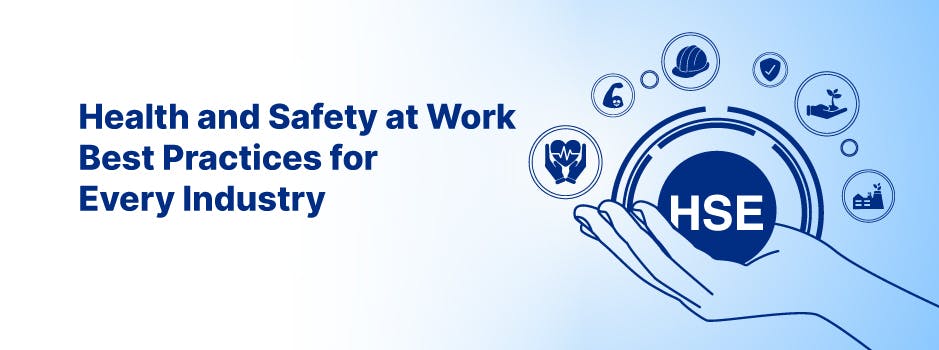Regardless of the industry, health and safety at work should be a top priority for employers and employees alike. Implementing best practices can help prevent accidents and injuries, enhance productivity, and improve overall employee satisfaction. This comprehensive guide will explore best practices for health and safety that can be applied across various industries, including hazard identification, risk assessment, employee training, and creating a culture of safety.
Hazard Identification and Risk Assessment
Conduct Regular Workplace Inspections
Performing routine workplace inspections is essential for identifying potential hazards and ensuring the effectiveness of existing safety measures. Inspections should involve a thorough examination of work areas, equipment, and processes, as well as employee work habits and behaviors.
Review Accident and Injury Data
Analyzing data from past workplace accidents, injuries, and near misses can help identify trends and areas of concern. This information can be used to prioritize safety initiatives and implement corrective actions to prevent future incidents.
Implement a Hazard Reporting System
Establish a system that encourages employees to report hazards, near misses, or unsafe conditions they observe in the workplace. A well-implemented reporting system helps identify potential risks and fosters a culture of open communication and shared responsibility for workplace safety.
Develop and Implement Risk Management Plans
Once hazards have been identified, employers should create and implement risk management plans to eliminate or minimize risks. This process includes:
- Prioritizing hazards based on the severity and likelihood of harm
- Identifying and implementing appropriate control measures (e.g., engineering controls, administrative controls, personal protective equipment)
- Monitoring the effectiveness of control measures and making adjustments as needed
Employee Training and Education
Provide Comprehensive Safety Training
Effective safety training is vital for maintaining a safe work environment. Employers should offer training on topics such as:
- Hazard communication and the Globally Harmonized System (GHS)
- Safe work practices for specific tasks and equipment
- Proper use of personal protective equipment (PPE)
- Emergency response and evacuation procedures
Training should be ongoing, updated as needed to address new hazards or changes in regulations, and tailored to the specific needs of the workplace.
Promote Employee Wellness
Encourage employees to prioritize their physical and mental well-being by offering wellness initiatives, such as stress management workshops, fitness classes, and healthy eating programs. A healthier workforce is more likely to be engaged, productive, and safe in the workplace.
Train Employees in First Aid and CPR
Providing first aid and CPR training can help employees respond effectively in the event of an accident or medical emergency. This training can be a valuable asset in minimizing the severity of injuries and potentially saving lives.
Implementing Best Practices for Health and Safety
Establish a Safety Committee or Designate Safety Representatives
A safety committee or designated safety representatives can help promote health and safety by:
- Developing and implementing safety policies and procedures
- Conducting regular workplace inspections and hazard assessments
- Organizing safety training and awareness activities
Maintain a Clean and Organized Workplace
A clean and organized workplace reduces the risk of accidents and promotes a healthy work environment. Implement housekeeping procedures to ensure work areas are free from clutter, spills, and other hazards.
Encourage Proper Ergonomics
Promote the use of proper ergonomics to reduce the risk of musculoskeletal disorders and other work-related injuries. Encourage employees to:
- Adjust their workstations for optimal posture and comfort
- Use ergonomic tools and equipment designed to minimize strain
- Take regular breaks to stretch and change positions
Create and Enforce a Substance-Free Workplace Policy
Implement a substance-free workplace policy to reduce the risk of accidents and maintain a safe work environment. This policy should include:
- Clear guidelines on prohibited substances and their use
- Employee education on the dangers of substance abuse
- Support for employees who may be struggling with substance abuse, including access to counseling or treatment programs
Implement a Workplace Violence and Harassment Prevention Program
Workplace violence and harassment can have severe consequences on employee health and safety. Develop a prevention program that includes a clear policy, reporting procedures, and employee training on recognizing and addressing potential issues.
Fostering a Culture of Safety
Communicate the Importance of Safety
Regularly communicate the importance of health and safety to employees through various channels, such as team meetings, newsletters, and safety bulletins. Emphasize the shared responsibility of all employees in maintaining a safe work environment.
Involve Employees in Safety Initiatives
Engage employees in safety initiatives by soliciting their input on hazard identification, risk assessment, and safety improvement measures. Involving employees in the decision-making process can lead to increased buy-in and commitment to safety policies and procedures.
Recognize and Reward Safety Performance
Acknowledge and reward employees for their safety achievements and contributions. Examples of recognition and rewards may include:
- Publicly acknowledging employees' safety achievements
- Offering incentives or bonuses for meeting safety goals
- Hosting events or activities to celebrate safety milestones
Lead by Example
Management should set the tone for workplace safety by demonstrating a commitment to health and well-being. Leading by example includes:
- Prioritizing safety in decision-making and resource allocation
- Regularly communicating the importance of workplace safety to employees
- Actively participating in safety training and initiatives
Conclusion
Implementing health and safety best practices in the workplace is crucial for preventing accidents, injuries, and maintaining a positive work environment. By identifying hazards, assessing risks, providing employee training, and fostering a culture of safety, employers can create a safe and healthy work environment for employees across all industries. It is essential to remember that health and safety is an ongoing process, requiring the commitment and active participation of everyone in the workplace.

